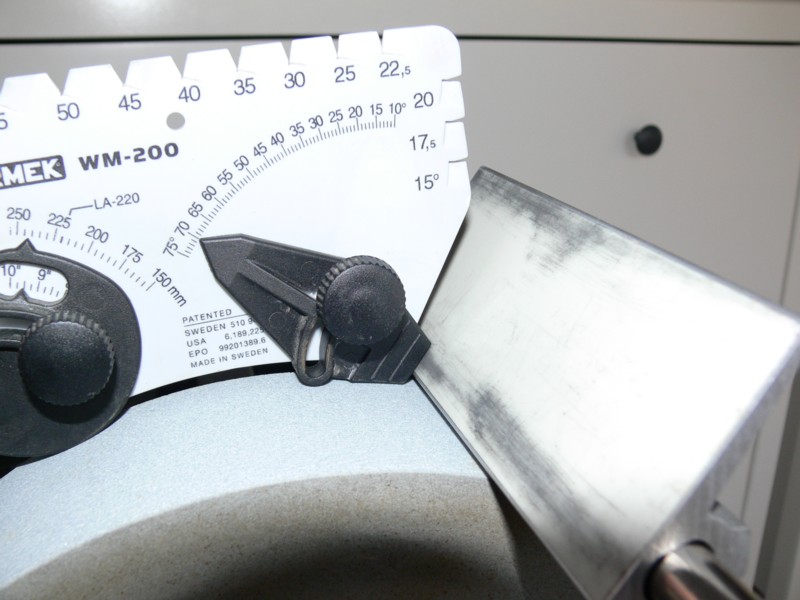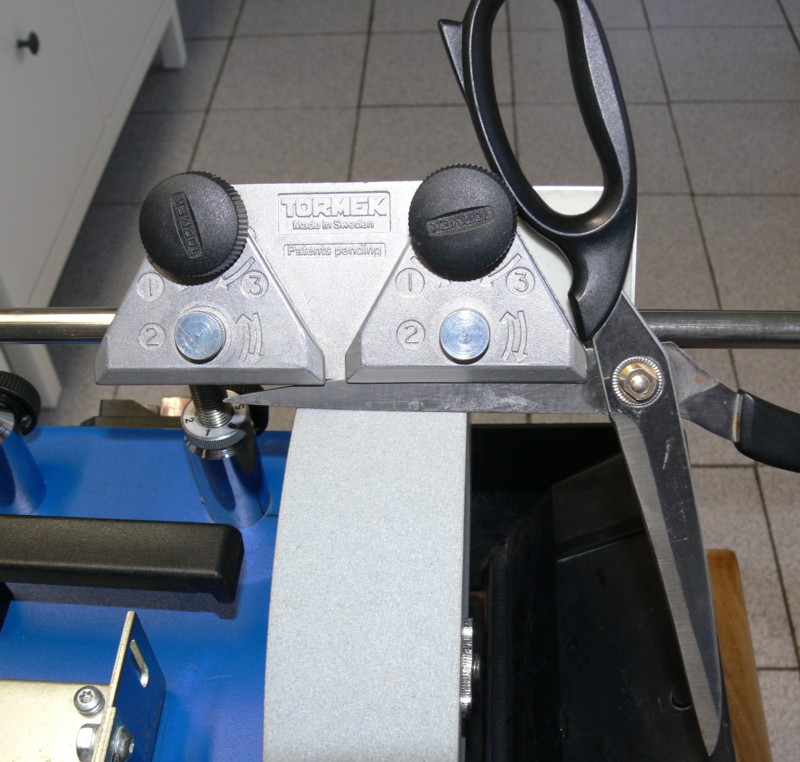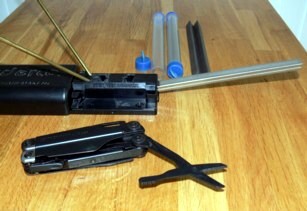|
Carbon
steels
Stainless mainstream (e.g. kitchen & butcher knife)
High-end and tool steels
Ceramic
Folding knife
Japanese single-bevel
Cleaver
Convex blade
Concave & Recurve blade
Straight edge, sheepsfoot
Serrated knife
Scissors >
Hatchet, tomahawk & axe
|
Scissors
Household, embroidery, fabric and tailor scissors etc.
Mount the
support plate on the Universal Support.
Set the
grinding angle using AngleMaster; a common angle is 60 degrees.
The Tormek
scissors jig has two pieces: the support plate, and the blade clamp. The
angle of the blade clamp wedge is 10 degrees.
If
sharpening at 60, set AngleMaster to 70 degrees, and set the grinding
angle directly to the support plate (not between the two clamps as in
their manual).
Now clamp
your scissors bevelled side down in the scissors jig, aligning the blade
parallel.
As you
grind watch the other blade to remain clear of the side of the stone.
Sharpen on coarse grit 220, either
on Aluminium Oxide wheel SG-250, or Silicon Carbide SB-250, until you get a burr along the
entire length of the blade.
Grind the
other blade the same way.
Dismount
the scissors from the jig.
Finish off the sharpening process by holding the scissor blades apart by the tips and closing them so that the cutting edges don't come into contact,
then opening them normally to remove the burr and burnish the area where they rub.
Do this a few times before closing them in a normal way, this step is critical.
Check for the burr on the bevelled side, and smooth away on a Spyderco ultrafine
ceramic bench stone if any.
Test
sharpness.
(Do not
hone scissors, unhoned they cut better.)
Recommended videos made by famous Tormek sharpeners:
By Jeff Farris >>
By Steve Bottorff >>
Smaller
scissors, like those in multitools, are sharpened with the Spyderco
Sharpmaker, first profiling with their diamond-impregnated triangle, and
then sharpening with the medium-grit triangle stone.
(Spyderco
diamond triangles are 220 grit, and the medium ceramic grit is equivalent
to JIS #1000.)
|
Mount the
support plate on the Universal Support.
Set the
grinding angle using AngleMaster; a common angle is 60 degrees.
The
Tormek scissors jig has two pieces: the support plate, and the blade
clamp. The angle of the blade clamp wedge is 10 degrees.
If
sharpening at 60, set AngleMaster to 70 degrees, and set the
grinding angle directly to the support plate (not between the two
clamps as in their manual).
|

|
|
Now clamp
your scissors beveled side down in the scissors jig, aligning the blade
parallel.
As you
grind watch the other blade to remain clear of the side of the stone.
Sharpen on coarse grit 220, either on Aluminium Oxide wheel SG-250, or Silicon Carbide SB-250, until you get a burr along the entire length of the blade.
|

|
|
Grind the
other blade the same way.
|
|
|
Dismount
the scissors from the jig.
Finish off the sharpening process by holding the scissor blades apart by the tips and closing them so that the cutting edges don't come into contact,
then opening them normally to remove the burr and burnish the area where they rub.
Do this a few times before closing them in a normal way, this step is critical.
Check for the burr on the bevelled side, and smooth away on a Spyderco ultrafine
ceramic bench stone if any.
Test
sharpness.
|
|
Smaller
scissors are sharpened with the Spyderco Sharpmaker, first profiling
with their diamond-impregnated triangle, and then sharpening with the
medium-grit stone.
(Spyderco
diamond triangles are 220 grit, and the medium ceramic grit is
equivalent to JIS #1000.)
|

|
|